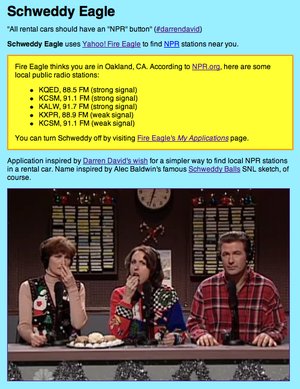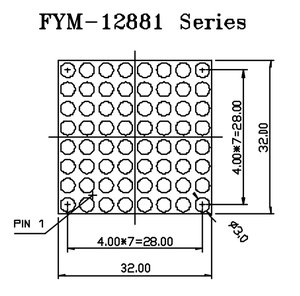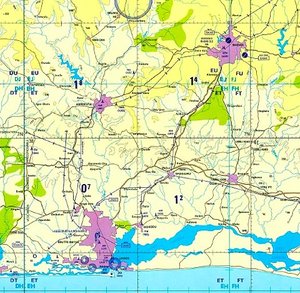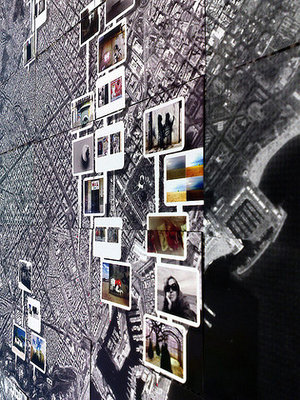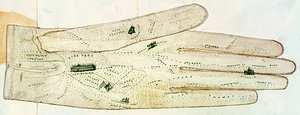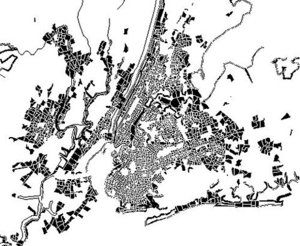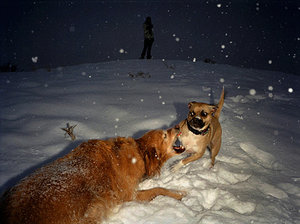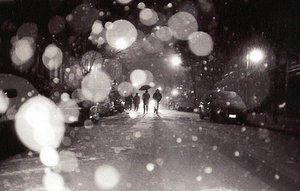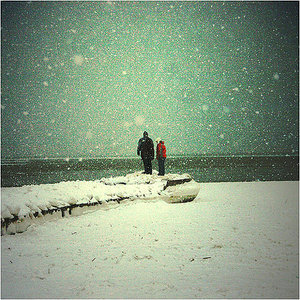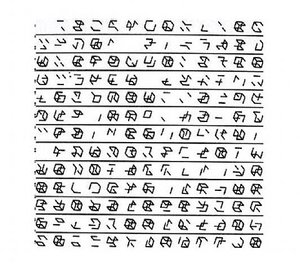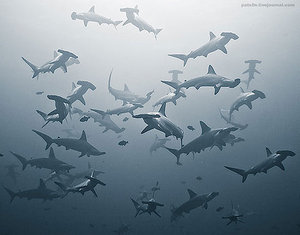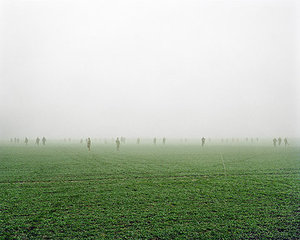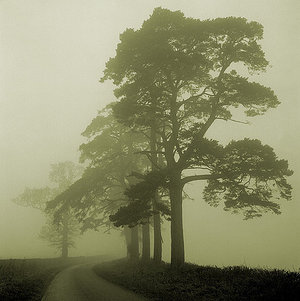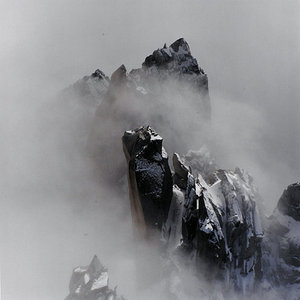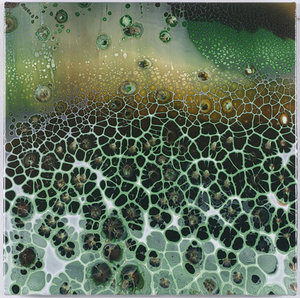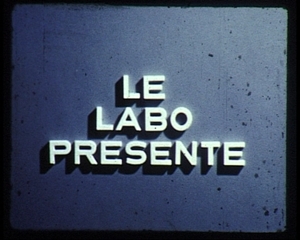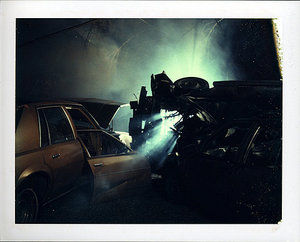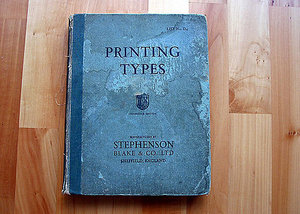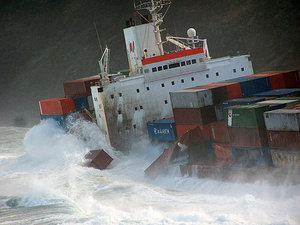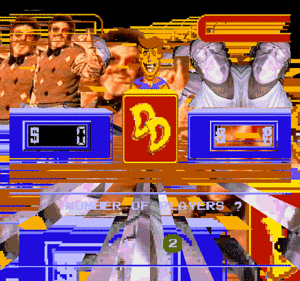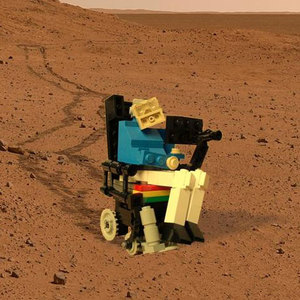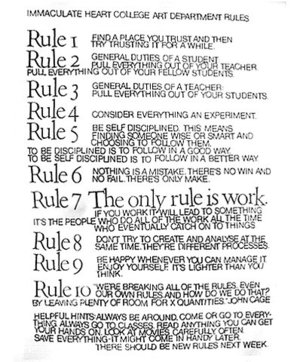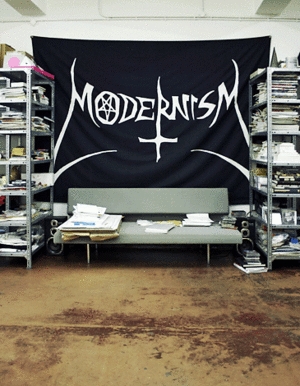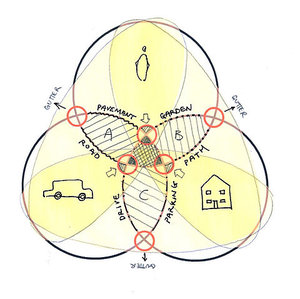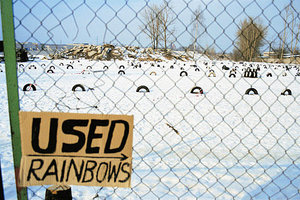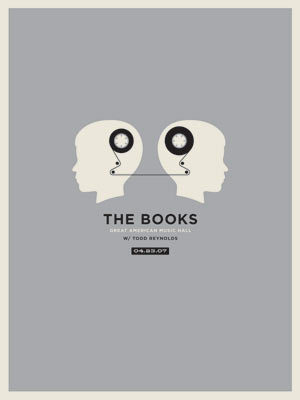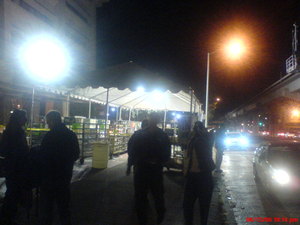tecznotes
Michal Migurski's notebook, listening post, and soapbox. Subscribe to ![]() this blog.
Check out the rest of my site as well.
this blog.
Check out the rest of my site as well.
Apr 28, 2008 6:29pm
solaris
Matt Webb sent this to me a while back, it's the Cliff Martinez soundtrack to the George Clooney version of Stanislaw Lem's Solaris. The soundtrack is instrumental, spooky, and calming.
- Is This What Everybody Wants
- First Sleep
- Can I Sit Next To You
- Will She Come Back
- Death Shall Have No Dominion
- Maybe You're My Puppet
- Don't Blow It
- High Energy Proton Accelerator
- Wear Your Seat Belt
- Wormhole
- We Don't Have To Think Like That Anymore
Also apropos of nothing, the Alan Parker edition of The Orb's Little Fluffy Clouds.
Apr 27, 2008 2:06am
schweddy eagle
This is so dumb.
Schweddy Eagle is an application I just wrote that yanks your location from Fire Eagle and tells you what NPR stations are in your area. You could use it with a jesus phone, perhaps in a rental car, to find quality radio wherever you happen to be.
It uses the excellent OAuth protocol to safely ask for your current location.
Apr 26, 2008 12:01am
arduino atkinson
Last October I published a tiny implementation of (Bill) Atkinson dithering in Python. Aaron ran with it and created a Modest Maps filter to prepare maps for print. Now, I'm finding Atkinson dithering useful when pumping pixels through this LED matrix I bought from Sparkfun and connected to my Arduino.
This is me messing with hardware.
First off, the matrix isn't an easy thing to wire up. The datasheet provides these two diagrams:
A bunch of trial-and-error showed that the pins on the matrix are ordered from #1 in the lower left, to #12 in the lower right, up to #13 in the upper right and #24 in the upper left: counter-clockwise, one pin for each row and two pins (green, red) for each column. The pins are grouped in sets of (green, red, row) across the top and bottom, with the top pins controlling the left-hand columns and upper rows, and the bottom pins controlling the right-hand columns and bottom rows. It's necessary to know which end is up, shown by the (now rubbed-off) product code printed on the bottom of the matrix component. I think a little extra effort on Foryard Optoelectronics' part would have resulted in a matrix that was radially symmetrical, and worked identically regardless of how it was pushed into the breadboard.
You connect a column and a row from power to ground, and the corresponding LED lights up. You can address one entire row or one entire column at a time, but a full 8x8 image requires you to scan from one to the next, illuminating pixels in sets of 8 hundreds of times per second.
I don't have 16 digital outputs on the Arduino, so I can only address six rows and six columns. This is enough to beging to experiment with tiny images, like the fades from all-off to all-on and back shown here:
There are two pieces of code making that happen. The first, matrix.pde, is running on the Arduino, set up to accept incoming bytes and display them on the little screen. It's super dumb, but it's got scan lines and an off-screen buffer to reduce flicker, so I'm happy with how it works. The second, fade.py, is running on my laptop and pumping strings of binary data over a serial connection to make the pretty pictures. At the moment, it's fading from white to black and back and sending dithered versions of those images over the wire. If my math is right, it should be able to do this at least 100 times per second without breaking a sweat, so I'm thrilled with the time resolution.
I'm not yet sure where this goes next, but I'm going to try running some simple video over the wire to see whether it's even remotely recognizeable as an image.
Apr 24, 2008 12:52am
design your api
Two hours now, since I spoke with Twitter's Alex Payne on API design and development to a weirdly wide room at Moscone West. I think we were well received ... some excellent questions toward the end of our two-part talk. I'm exploring the idea of RESTfulness as a physical metaphor for the movement of objects to help better explain why it's winning the headspace competition against SOAP and XML-RPC.
We put our slides and notes up on Slideshare. The notes may even represent some of what came out of my mouth while I dropped into auto-pilot up there...
Apr 21, 2008 8:40pm
ffffound review
I've been an active user of Ffffound! since late summer of 2007 (sorry, I don't have any invites), here is a collection of some of my favorite images from the site. I've roughly categorized them into a few groups: maps, snow, geometry, mist, texture, grain, frozen moments, WTF?, and everything else.
Maps
Maps are what we do, here are some great ones.
Aaron Cope has been thinking about the papernet.
This is a map drawn on a glove that Gem found.
I love freeway interchanges viewed from above.
Snow
I have a soft spot for photographs taken through heavy snow, with flakes out of focus and huge in the foreground. Combined with the short-range lighting in a few of these, it makes for a lovely effect.
Geometry
Ambient occlusion is an interesting trend in rendering, like additive blending.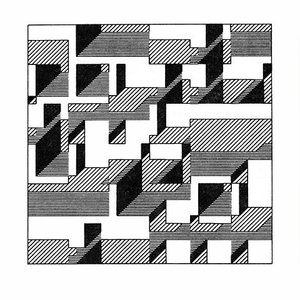
Mist
Many of my favorite images from Fffound! are photographed through mist.
Texture
These are some of Fred Scharmen's lovely branching sketches.
Grain
Visible grain is making a re-appearance in photography and film, see e.g. No Country For Old Men.
This one's from a collection of vintage color photos from the 1940's and later.
This one's in Wroclaw, my hometown.
Frozen Moments
WTF
A lot of completely absurd shit makes its way onto Fffound!.
The bear was my AIM buddy icon for a while.
This strongly reminds me of Madame Chao's noisecore visual style.
A lego rendering of Stephen Hawking!
Etc.
The girl's face on the right absolutely makes this photo.
Recently, one of my most-linked blog posts.
From the Helvetica movie.
I first found this amazing image in Netochka Nezvanova's ("the most feared woman on the internet") images directory, back when I gave two shits about the software abomination that was nato.0+55.
This lovely photo convinced me that black spokes with light-colored rims would be a great idea for my IRO.
Apr 19, 2008 12:22am
brandon morse
From Generator:
The stark videos of Brandon Morse present the viewer with excercises in tension, set tableaux in which structures morph and twist under physical constraints. Stripped-down architectural forms that ought to exhibit the rigidity of highrise buildings instead engage in a tug-of-war, the result of a string simulation distributing kinetic force through a network of nodes.
Apr 16, 2008 6:05pm
money
Jan Chipchase, on "Sente":
Sente is the informal practices of sending and receiving money that leverages public phone kiosks and trusted networks. In Uganda the word Sente has two meanings the first being 'money' and the second 'the sending of money as airtime'. It works like this:
Joe lives in Kampala and wants to send his sister Vicky 10,000 Ugandan Shillings - about 4 Euros. He buys a pre-paid top up card for that amount but instead of topping up his own phone calls the local phone kiosk operator in Vicky's village. The phone kiosk operator uses the credit to top up his own phone, takes a commission of anywhere between 10 and 30% and passes the rest onto Vicky in cash. The kiosk operator then resells the airtime at a profit (it is after all his business).
I love the idea that this currency has a value ceiling, an upper bound defined by the number of people with minutes in the day to talk to one another.
Jack Rusher, on money:
The early Mesopotamians used a weight of barley as their first currency. It seems important to point out to the modern reader, accustomed as she must be to the way modern currency works, that this money was different from the money of today in some very important ways. It was an actual edible commodity that could be used to make soup, bread and beer, for one thing, and for another, it was prone to decay: pests ate it, it tended to rancidity if kept for too long, and so on.
This latter property of the currency was shared with most goods in the economy, all of which fell somewhere along a continuum of impermanence. The impermanent nature of these goods is linked to the underlying ecosystem from which all value ultimately arises; everything that wasn't made of sand (pottery) or metal (tools and jewelry) was the direct product of sunlight and bio-mass, and consequently subject to unavoidable near-term wear and decay.
...
In a very real sense modern economics is still suffering the effects of a 5,000 year old swindle. The modern wisdom that a small rate of inflation is part of a healthy economy comes down to the need to make our silver behave a little more like barley.
There's an upper bound here, as well, defined by how much actual barley can be consumed.
Adam, on twitter:
If I were to design a universal currency that didn't float too badly, I'd base it on avg'd cost of balanced 2000 kCal diet in 200+ markets.
How hard could it be to design a simple currency with these characteristics and set it loose? Second Life has one; seems like all that's needed is an acceptable amount of trust and an exchange rate. Great conversation with Adam exploring this earlier today.
Instead of a gold standard, it would operate on a food bank standard where you traded your tokens in for a single balanced meal when you weren't trading them for goods and services. This also reminds me of petrodollars, another concept connected to the ultimate foundation of value: fueling biological and other activity for the purposes of movement and procreation.
Here's the scene at the 7th street post office when I dropped off my taxes last night at 10pm:
Apr 13, 2008 6:24am
index supercuts
Andy has a collection of fanboy supercuts, a "genre of video meme, where some obsessive-compulsive superfan collects every phrase/action/cliche from an episode (or entire series) of their favorite show/film/game into a single massive video montage." His collection includes some of the excellent and bizarre Lovelines isolation studies by Chuck Jones.
I'm reminded of how these constitute a kind of search index, a concept first introduced to me 11 years ago via Brian Slesinsky's Webmonkey article, Roll Your Own Search Engine. That was the first of many demystifications of big, web-scale technology for me. The thread running through all these fan cuts is the inverted index, identical to the concept introduced in that ancient article. An inverted index maps elements such as words to their source locations in a data corpus. Each of the pieces Andy links to is a kind of inverted index, pointing to locations of obscenities, audible inhalations, wilhelm screams, and so on.
The other thing it reminded me of was Simon Winchester's excellent book, The Professor And The Madman, an account of W.C. Minor's assistance in constructing the first edition of the Oxford English Dictionary. Minor was a confined lunatic with an extensive personal library, and the OED required that every sense of a word in its definition be traceable to an original, printed quotation. These were crowd-sourced from literate Englishmen of the time, but Minor's contribution went above and beyond because he noted interesting words as he read, constructing an inverted index of his library for OED-worthy terms. When dictionary editor James Murray needed a quotation for a particular word, there was a good chance Minor had already encountered and indexed it.
The works pointed to by Andy's blog post (and additions in the comments) are a special form of indexing, made possible by cheap communication and digital media. Let's hope the RIAA/MPAA don't fuck everything for an emerging form of media consumption.
Apr 8, 2008 6:04am
app engines
Google launched their app engine today, and I'd like to be the 10,000,000th pundit to comment on it. First, it's clearly a nod to Amazon's thing, a direct competitor for developers looking to host projects on proper servers without incurring proper hardware costs.
Everyone else is already describing what this is, but I'm interested in the ethical and motivational implications. Most of what I'm reading about the GAE is some variation of "joy, now I have to learn Python", which I think is an accurate stand-in for Google's entire stance on this project. A quick initial read of their documentation suggests that there's a lot more than "learn Python" here - there's also "learn Django" and "learn BigTable". GAE is as much an architectural, moral, and stylistic project as it is a technical one. Where Amazon gives you shiny rack of tools to play with, Google gives you the Tao.
At the moment, Google seems to have tuned their project towards the world of web applications, not the kind of general purpose computing offered by Amazon. I expect this to change. AWS is pushing a menu of services like SQS that provide specific pieces of a distributed infrastructure. GAE is giving you the whole shooting match in one go, but telling you approximately how it should be used. I've heard a bunch of conjectures on why this is: some people think it's a way to smooth the entry path for startups looking to get bought by Google ("hey, we already use all your stuff"), while Tom sneakily suggests it's a golden parachute for soon-to-be vested ex-employees who'd still like a bit of the old infrastructure to play with.
My own initial take on both projects has been like night and day. Amazon's services were like a breath of fresh air while so far, Google's has filled me a dread I dare not name, in spite of proudly using Python as my "thinking language" of choice. AWS exists happily as a component set for other applications, and I use S3 extensively to serve map tiles and listen to music while Crimespotting runs on EC2. I think that in this case, Google is commoditizing the wrong end of the stack. They seem to be providing the equivalent of single-language shared hosting without really opening up the benefits of a massive computing infrastructure that a tiny minority of applications need or want. I take my own initial preemptive exhaustion as a sign that they are expecting too much of their prospective users. Kiss the ring.
That said, both of these services have an ethical dimension that I appreciate. I trust that machine instances and running applications not seeing a lot of activity are swapped out in favor of those that are, a form of carbon footprint minimization impossible to achieve with your billed-monthly colocated server. In this case, scale does matter as long as the two companies keep their prying eyes out of the data and processes entrusted to them. I'm looking forward to seeing greater commoditization in this area, and I happen to think that Amazon is doing a significantly better job moving us in that direction.
